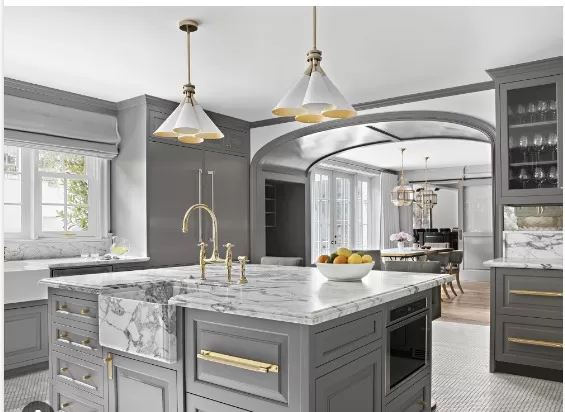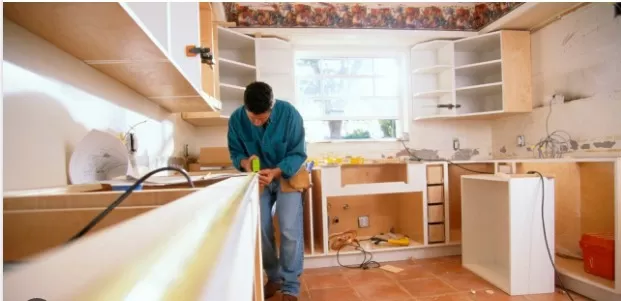Kitchen Remodeling: Comprehensive Planning Guide. Embarking on a kitchen remodeling project can be overwhelming, but with proper knowledge and planning, it can become an exciting and rewarding endeavor. To ease the stress, it’s important to familiarize yourself with your design, material, and budget options. Start by envisioning your ideal kitchen design, considering factors such as layout, functionality, and aesthetics.
Explore different materials for countertops, cabinets, flooring, and backsplashes to find the ones that align with your style and durability preferences. Additionally, establish a realistic budget that takes into account not only the materials and labor costs but also any potential unexpected expenses. Researching and understanding your options will help you make informed decisions and ensure a smoother and more successful kitchen remodeling experience.
Designing Your Ideal Kitchen

While the appearance of your kitchen is certainly important, the primary focus of a remodeling project should be on its functionality.
Begin by conducting thorough research and visiting show houses as well as kitchen showrooms to gain a firsthand understanding of different products. Once you’ve gathered inspiration, it’s time to establish a budget that aligns with your key priorities for the new space.
Additionally, familiarize yourself with the fundamental principles of design.
Modern kitchens typically span an average of 200-300 square feet and are frequently integrated into open-floor plans.
Current trends in kitchen design emphasize simplicity, a clutter-free aesthetic, energy efficiency, and the use of natural materials.
Utilize Environmentally Conscious Materials in Your Construction
When it comes to replacing or updating various elements of your kitchen decor, such as countertops, flooring, and tiles, it’s important to prioritize environmentally friendly materials.
Look for sustainable options like bamboo and cork, which are derived from rapidly regenerating plants, unlike wood, which takes many years to regrow. Additionally, consider utilizing recycled materials from reputable companies such as Green Building Supply.
Cabinetry is another area where renewable materials are making headway.
For instance, Kirei board is an engineered product made from sorghum plant stalks, while laminated plywood often incorporates bamboo. Reclaimed wood is also a popular choice.
Reusing existing cabinetry is highly recommended, especially if it is in good condition and poses no health risks to the residents. Opting for salvaged cabinetry helps reduce the environmental impact of manufacturing new products and minimizes the amount of waste entering landfills.
Ashley Katz, the communications manager for the U.
S. Green Building Council, based in Washington, DC, emphasizes that the options for environmentally friendly cabinetry materials have expanded significantly.
What was once a limited selection now offers endless possibilities, and this trend is expected to continue.
Embrace Energy-Efficient Appliances

When it comes to assessing the eco-friendliness of your kitchen, one of the primary areas to focus on is your appliances.
According to Jennifer Powers, the media manager of the National Resources Defense Council, the refrigerator is typically the biggest energy consumer in a home, second only to heating and cooling systems. The good news is that modern refrigerators are significantly more energy-efficient than older models, even if they were considered energy-efficient in the past.
Today’s refrigerators, regardless of the type, are approximately 70 percent more efficient than their outdated counterparts.
When shopping for appliances, it’s essential to look for the Energy Star Rating Number.
This number indicates the appliance’s energy efficiency level, with a higher rating number indicating greater efficiency. Appliances with the Energy Star label are ranked among the top 25 percent of energy performers, making them excellent choices for reducing energy consumption in your kitchen.
Maintain Your Budgetary Guidelines
When undertaking a kitchen remodeling project, it’s highly likely that you’ll need to make decisions regarding where to save money and where to splurge.
The National Kitchen & Bath Association (NKBA) suggests keeping your priorities in mind throughout the process. For instance, would you prefer a $500 range or a $10,000 one? Is a $100 sink sufficient, or do you desire one that costs $3,500? Are you content with a $4 polished brass knob, or do you prefer a more luxurious $98 crystal model? Understanding what matters most to you will help guide your budget allocation.
According to the NKBA, here’s a breakdown of how your budget might be distributed:.
– Cabinetry and hardware typically account for approximately 29% of your total investment.
– Appliances and ventilation may comprise around 14% of the budget. – Countertops typically amount to about 10% of the overall cost.
– Installation costs, including labor, make up roughly 17% of the project’s total expenses.
It’s prudent to set aside an additional 10% to 20% of your budget for unexpected expenses or contingencies that may arise during the course of the project.
This will ensure you’re prepared for any unforeseen circumstances without exceeding your financial limitations.
Have Confidence in Your Personal Taste

A notable shift in consumer mindset can be observed, as individuals are now placing greater emphasis on following their own sense of style rather than conforming to trends.
According to Gin Guei Ebnesajjad, the manager of product styling and development with Corian, consumers have become more assertive in their choices. They are now more knowledgeable about colors and possess a keen sense of aesthetics.
Consequently, their kitchen designs showcase a unique and creative flair that surpasses the standardized kitchens found in many homes.
This shift signifies that it’s essential to trust your own judgment and embrace your personal style when designing your kitchen.
Rather than solely relying on trends, prioritize creating a space that reflects your individuality and brings you joy. By staying true to your preferences and incorporating your creative ideas, you can craft a kitchen that is truly one-of-a-kind and resonates with your personal taste.
*The information is for reference only.